About WORLD musical RhytHmS (By alphabetically)
The drum is a member of the percussion group of musical instruments. In the Hornbostel-Sachs classification system, it is a membranophone.[1] Drums consist of at least one membrane, called a drumhead or drum skin, that is stretched over a shell and struck, either directly with the player's hands, or with a percussion mallet, to produce sound. There is usually a resonant head on the underside of the drum. Other techniques have been used to cause drums to make sound, such as the thumb roll. Drums are the world's oldest and most ubiquitous musical instruments, and the basic design has remained virtually unchanged for thousands of years.[1]
Drums may be played individually, with the player using a single drum, and some drums such as the djembe are almost always played in this way. Others are normally played in a set of two or more, all played by the one player, such as bongo drums and timpani. A number of different drums together with cymbals form the basic modern drum kit.
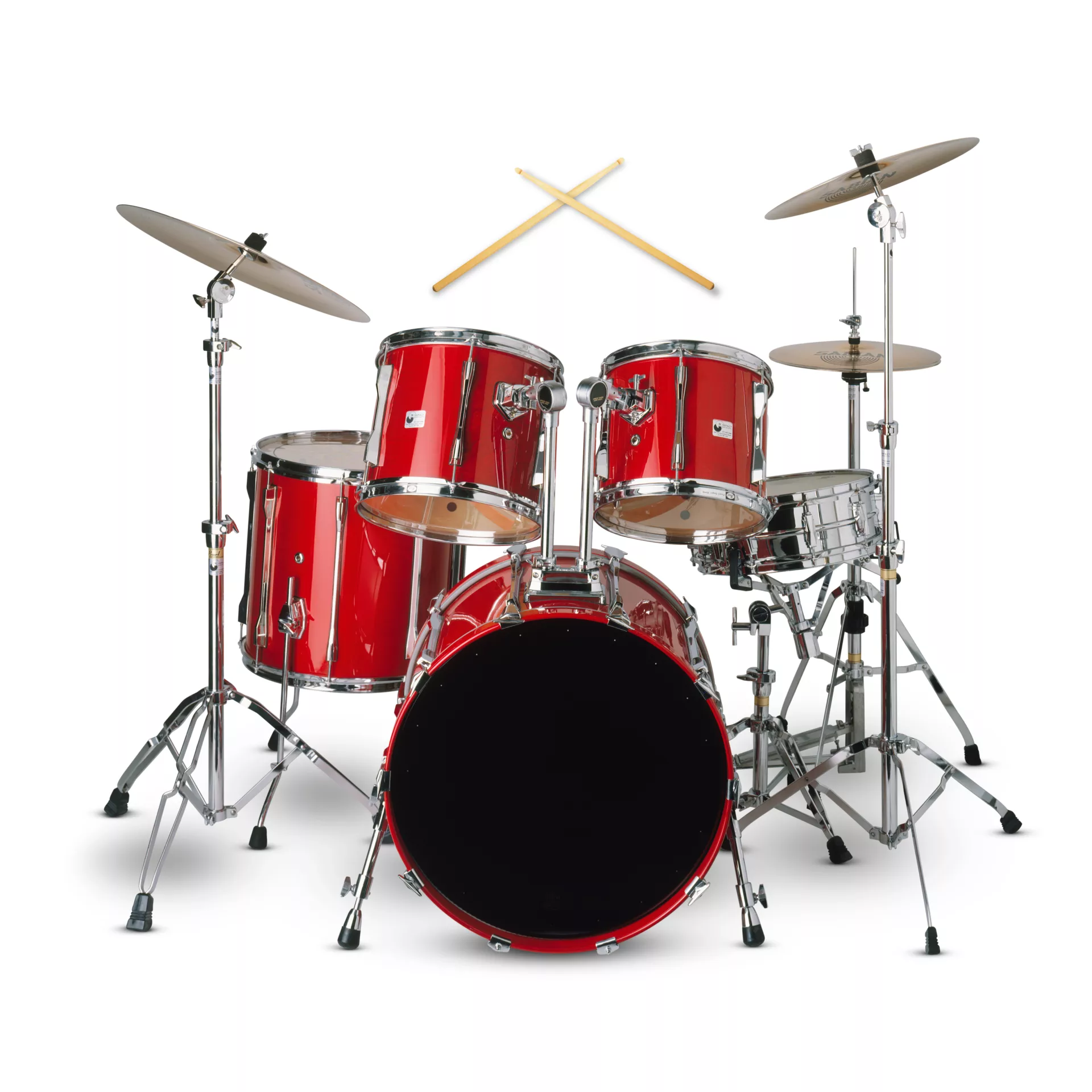
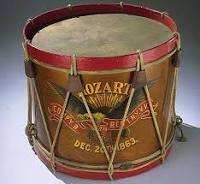 Uses
UsesDrums are usually played by striking with the hand, a beater attached to a pedal, or with one or two sticks with or without padding. A wide variety of sticks are used, including wooden sticks and sticks with soft beaters of felt on the end. In jazz, some drummers use brushes for a smoother, quieter sound. In many traditional cultures, drums have a symbolic function and are used in religious ceremonies. Drums are often used in music therapy, especially hand drums, because of their tactile nature and easy use by a wide variety of people.
In popular music and jazz, "drums" usually refers to a drum kit or a set of drums (with some cymbals, or in the case of harder rock music genres, many cymbals), and "drummer" to the person who plays them.
Drums acquired even divine status in places such as Burundi, where the karyenda was a symbol of the power of the king.
Guitar
The guitar is a fretted musical instrument that typically has six strings. It is usually held flat against the player's body and played by strumming or plucking the strings with the dominant hand, while simultaneously pressing selected strings against frets with the fingers of the opposite hand. A plectrum or individual finger picks may also be used to strike the strings. The sound of the guitar is projected either acoustically, by means of a resonant chamber on the instrument, or amplified by an electronic pickup and an amplifier.
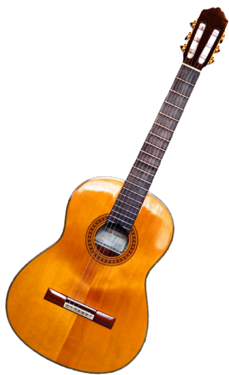 The guitar is classified as a chordophone – meaning the sound is produced by a vibrating string stretched between two fixed points. Historically, a guitar was constructed from wood with its strings made of catgut. Steel guitar strings were introduced near the end of the nineteenth century in the United States; nylon strings came in the 1940s.The guitar's ancestors include the gittern, the vihuela, the four-course Renaissance guitar, and the five-course baroque guitar, all of which contributed to the development of the modern six-string instrument.
The guitar is classified as a chordophone – meaning the sound is produced by a vibrating string stretched between two fixed points. Historically, a guitar was constructed from wood with its strings made of catgut. Steel guitar strings were introduced near the end of the nineteenth century in the United States; nylon strings came in the 1940s.The guitar's ancestors include the gittern, the vihuela, the four-course Renaissance guitar, and the five-course baroque guitar, all of which contributed to the development of the modern six-string instrument.There are three main types of modern guitar: the classical guitar (Spanish guitar/nylon-string guitar); the steel-string acoustic guitar or electric guitar; and the Hawaiian guitar (played across the player's lap).
Piano
The piano is a stringed keyboard instrument in which the strings are struck by wooden hammers that are coated with a softer material (modern hammers are covered with dense wool felt; some early pianos used leather). It is played using a keyboard, which is a row of keys (small levers) that the performer presses down or strikes with the fingers and thumbs of both hands to cause the hammers to strike the strings. It was invented in Italy by Bartolomeo Cristofori around the year 1700.
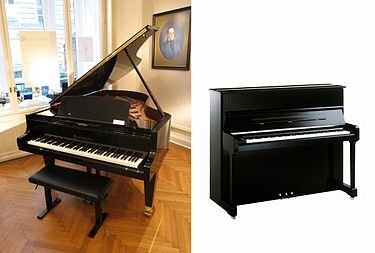
The word "piano" is a shortened form of pianoforte, the Italian term for the early 1700s versions of the instrument, which in turn derives from clavicembalo col piano e forte (key cimbalom with quiet and loud) and fortepiano. The Italian musical terms piano and forte indicate "soft" and "loud" respectively, in this context referring to the variations in volume (i.e., loudness) produced in response to a pianist's touch or pressure on the keys: the greater the velocity of a key press, the greater the force of the hammer hitting the strings, and the louder the sound of the note produced and the stronger the attack. The first fortepianos in the 1700s allowed for a quieter sound and greater dynamic range than the harpsichord.
A piano usually has a protective wooden case surrounding the soundboard and metal strings, which are strung under great tension on a heavy metal frame. Pressing one or more keys on the piano's keyboard causes a wooden or plastic hammer (typically padded with firm felt) to strike the strings. The hammer rebounds from the strings, and the strings continue to vibrate at their resonant frequency.[4] These vibrations are transmitted through a bridge to a soundboard that amplifies by more efficiently coupling the acoustic energy to the air.
When the key is released, a damper stops the strings' vibration, ending the sound. Notes can be sustained, even when the keys are released by the fingers and thumbs, by the use of pedals at the base of the instrument. The sustain pedal enables pianists to play musical passages that would otherwise be impossible, such as sounding a 10-note chord in the lower register and then, while this chord is being continued with the sustain pedal, shifting both hands to the treble range to play a melody and arpeggios over the top of this sustained chord. Unlike the pipe organ and harpsichord, two major keyboard instruments widely used before the piano, the piano allows gradations of volume and tone according to how forcefully or softly a performer presses or strikes the keys.
Most modern pianos have a row of 88 black and white keys, 52 white keys for the notes of the C major scale (C, D, E, F, G, A and B) and 36 shorter black keys, which are raised above the white keys, and set further back on the keyboard. This means that the piano can play 88 different pitches (or "notes"), spanning a range of a bit over seven octaves. The black keys are for the "accidentals" (F♯/G♭, G♯/A♭, A♯/B♭, C♯/D♭, and D♯/E♭), which are needed to play in all twelve keys. More rarely, some pianos have additional keys (which require additional strings), an example of which is the Bösendorfer Concert Grand 290 Imperial, which has 97 keys.
Most notes have three strings, except for the bass, which graduates from one to two. The strings are sounded when keys are pressed or struck, and silenced by dampers when the hands are lifted from the keyboard. Although an acoustic piano has strings, it is usually classified as a percussion instrument rather than as a stringed instrument, because the strings are struck rather than plucked (as with a harpsichord or spinet); in the Hornbostel–Sachs system of instrument classification, pianos are considered chordophones. There are two main types of piano: the grand piano and the upright piano.
The grand piano has a better sound and gives the player a more precise control of the keys, and is therefore the preferred choice for every situation in which the available floor-space and the budget will allow, as well as often being considered a requirement in venues where skilled pianists will frequently give public performances. The upright piano, which necessarily involves some compromise in both tone and key action compared to a grand piano of equivalent quality, is nevertheless much more widely used, because it occupies less space (allowing it to fit comfortably in a room where a grand piano would be too large) and is significantly less expensive.
During the 1800s, influenced by the musical trends of the Romantic music era, innovations such as the cast iron frame (which allowed much greater string tensions) and aliquot stringing gave grand pianos a more powerful sound, with a longer sustain and richer tone. In the nineteenth century, a family's piano played the same role that a radio or phonograph played in the twentieth century; when a nineteenth-century family wanted to hear a newly published musical piece or symphony, they could hear it by having a family member play a simplified version on the piano. During the nineteenth century, music publishers produced many types of musical works (symphonies, opera overtures, waltzes, etc.)
in arrangements for piano, so that music lovers could play and hear the popular pieces of the day in their home. The piano is widely employed in classical, jazz, traditional and popular music for solo and ensemble performances, accompaniment, and for composing, songwriting and rehearsals. Although the piano is very heavy and thus not portable and is expensive, its musical versatility, the large number of musicians–both amateurs and professionals– trained in it, and its wide availability in performance venues, schools and rehearsal spaces have made it one of the Western world's most familiar musical instruments.
Marabi
Marabi is a style of music that evolved in South Africa over the last century. The early part of the 20th century saw the increasing urbanisation of black South Africans in mining centres such as the gold mining area around Johannesburg - the Witwatersrand
What is the meaning of marabi?
Noun. marabi (uncountable) A lively music genre from South Africa.
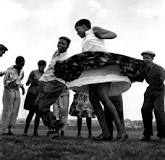
Marabi was a South African style of music rooted in jazz mixed with sounds of African rhythm. This music genre was developed during the late 1920's in South Africa, when people of colour were becoming more urbanised and moved to townships.
Common instruments found in marabi style music include the guitar, piano, brass instruments, and organs; vocalists were also common for marabi music. By the 1930s, however, marabi had incorporated new instruments, guitars, concertinas and banjos, and new styles of marabi had sprung up.
What is Kwassa Kwassa and marabi?
Kwassa kwassa. Marabi. African music with the fusion of west african and black american music. Afrobeat. An african music that wakes up the worshippers after fasting of ramadan.
One of the most notable musical pieces that contain a hint of Marabi is Paul Simon's 1986 epic, Graceland. Cultural origins 1920s–1930s